Venue: The Trinity Arts Centre, Gainsborough
LECTURES
1.45 pm, first Thursday of the month - February to June and September to December
Note: no meetings in January, July and August
2025
November 6 - Paul Bahn - New Advances in Ice Age Art
December 4 - Patrick Craig - Entertaining Angels Unawares: Angels in the Bible, Music and Art
November 6, 2025
Paul Bahn
Studied archaeology at the University of Cambridge, and completed PhD thesis (1979) on the prehistory of the French Pyrenees. Has held post-doctoral fellowships, at Liverpool and London, plus a J. Paul Getty postdoctoral fellowship in the History of Art and the Humanities. Devotes time to writing, editing and translating books on archaeology, plus occasional journalism and as much travel as possible. Main research interest is prehistoric art, especially rock art of the world, and most notably Palaeolithic art, as well as Easter Island. Led the team which, at his instigation, searched for and discovered the first Ice Age cave art in Britain (at Creswell Crags) in 2003.
New Advances in Ice Age Art
Ice Age art - dating from c.40,000 to 12,000 years ago - continues to be found every year, in the form of both portable objects and images on cave walls and on rocks in the open air. This talk will present a selection of the most recent discoveries, many of them still unknown to the general public, and a few still unpublished. Most are in western Europe, but other regions from Florida to the Nile Valley have also entered the picture in recent years.
December 4, 2025
Patrick Craig
Patrick Craig is a Vicar Choral at St Paul’s Cathedral. For twenty years he combined this with an international career singing over a thousand concerts with the world-renowned early music consort The Tallis Scholars. He also sings with the award-winning group The Cardinall’s Musick. He founded and conducts this country’s leading all-female professional choir, Aurora Nova. He has conducted concerts for the BBC Proms, the Brighton, Lichfield and Aldeburgh Festivals, and with the City of London Sinfonia. As a Cambridge history graduate with a lifelong interest in the arts, he has gone on to lead choral workshops for amateur singers across the world, where he places music in its historical and cultural context. He regularly lectures for the St Paul’s Adult Education programme and for John Hall’s Venice Courses, which have allowed him to incorporate his interests in theology, art and poetry. In 2020, when his singing and conducting work disappeared overnight as a result of the Covid pandemic, Patrick poured all his experience into online presentations which have raised vital funds for the Help Musicians Charity.
Entertaining Angels Unawares: Angels in the Bible, Music and Art
Angels don’t speak, they sing. And they have inspired much wonderful music. Patrick will investigate their roles as guardians, messengers and fighters through imaginative music by Britten, Elgar and Mendelssohn. Angelic words also feature in regularly repeated liturgical texts that Patrick sings daily in St Paul’s Cathedral, such as the Sanctus and Te Deum. These will give us an opportunity to explore and enjoy angelic music by composers such as Bach, Mozart and Walton. Patrick will call on some of the world’s finest art and poetry to further expand this journey into the heavenly realm.
2026
February 5 - Rosalind Whyte - A Highland Thing? 18th to 20th Century Scottish Art
March 5 - James Smallwood - The Life and Work of William Moorcroft
April 2 - Dr John Stevens - The Art of Rabindranath Tagore
May 7 - Fiona Rose - The David Parr House: a Decorative Artist's Palace of Art
June 4 - Nirvana Romell - Mosaics in the Northern Adriatic: Power, Beauty and Education
September 3 - Dr Duncan Pring - The Mayan Civilisation of Central America
October 1 - Caroline Bendix - Why can't we read them? Conserving Books of The National Trust
November 5 - Barry Venning - Cartoons and Contraptions: The Wonderful World of W. Heath Robinson
December 3 - Monica Bohm-Duchen - Visions of the Orient - Japanese Art and the Western Artistic Imagination
February 5, 2026
Rosalind Whyte
BA and MA from Goldsmith’s College, and an MA (distinction) from Birkbeck College. Experienced guide at Tate Britain, Tate Modern, the Royal Academy and Greenwich. Lectures at Tate, to independent art societies and on cruises. Leads art appreciation holidays.
A Highland Thing? 18th to 20th Century Scottish Art
For many years Scottish artists found it necessary to travel south to make their names and careers in art, but with the increasing importance of the cities of Edinburgh and Glasgow from the end of the 18th Century, an independent Scottish art scene became possible. These developments will be traced through individuals such as Sir Henry Raeburn, the first artist to find success whilst remaining in his native Scotland, and Sir David Wilkie, important as one of the first to truly export Scottish art. This lecture will also look at the parallels between Scottish and other European art, as well as periods of divergence, touching on art movements such as the Glasgow Boys and the Scottish Colourists.
March 5, 2026
James Smallwood
James has an established and successful lecturing career speaking to gardening and horticultural groups and at Royal Horticultural Society shows and events on a number of gardening topics. He has been a keen collector of Moorcroft pottery for over 30 years and has an extensive collection. These are primarily examples of William Moorcroft’s early work dating back to 1897 and he takes some of these pieces with him to illustrate his talks. He has been a member of the Moorcroft Collectors’ Club for a number of years and is fortunate to have two former employees of the pottery amongst his friends. He has visited the pottery on a number of occasions and has an in depth knowledge of past and present processes of manufacture. He is in regular contact with Moorcroft and has generously been given access to their archive material. Wherever possible he takes a selection of Moorcroft pieces to display. A recent lecture was attended by a former member of the board of directors who told James that even they had learned some new information about William Moorcroft.
The Life and Work of William Moorcroft
William Moorcroft 1872 – 1945 was brought up in the back streets of Burslem, Stoke-on-Trent. He knew tragedy from an early age losing his sister when he was 8, his mother a year later and his father when he was just 12. Perhaps it was this tragic upbringing that helped develop his strength of character and resilience that saw him establish himself as the most accomplished studio potter of recent times.
William trained at what was to become the Royal College of Art and could have pursued a career as an art teacher but instead chose to employ his artistic talents in the medium of pottery. He stuck faithfully to the principles of the great William Morris who stated that “nothing was worth producing if it hadn’t come from the artist’s own hands”. Whilst not unique, his skill in producing tube lined pieces with designs inspired by nature are at the very pinnacle of the potter’s art. International gold medal awards, a supplier to renowned retailers Liberty and Tiffany, a successful global export business and a Royal Appointment to Her Majesty Queen Mary in 1928 are just some of his many achievements.
April 2, 2026
Dr John Stevens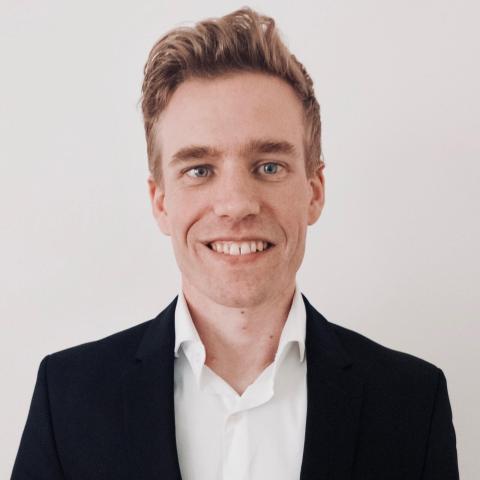
Dr John Stevens gained his PhD in History from UCL, before going on to teach British Imperial History, Indian History and Bengali Language at the School of Oriental and African Studies (SOAS, University of London). His biography of the Indian guru Keshab Chandra Sen – Keshab: Bengal’s Forgotten Prophet - was published by Hurst and Oxford University Press in 2018. He is a regular visitor to India and Bangladesh and has lectured at numerous Indian universities. He also works as a consultant on Indian affairs and teaches the Bengali language to private students. He has appeared many times in the Indian media, and was a guest on BBC Radio Four’s In Our Time, discussing the poet and artist Rabindranath Tagore.
The Art of Rabindranath Tagore
Rabindranath Tagore (1861-1941) is arguably the most important Indian artistic figure of the modern era. The first Prime Minister of India, Jawaharlal Nehru, claimed that he had two gurus: Gandhi and Tagore. A renowned poet, novelist, composer and painter, Tagore is also the only person in history to have written the national anthems for three countries (India, Sri Lanka and Bangladesh). He became a global sensation when he won the Nobel Prize for Literature in 1913, the first non-European to do so. This lecture provides an introduction to Tagore’s remarkable life and work, including his novels, poetry, songs and paintings.
May 7, 2026
Fiona Rose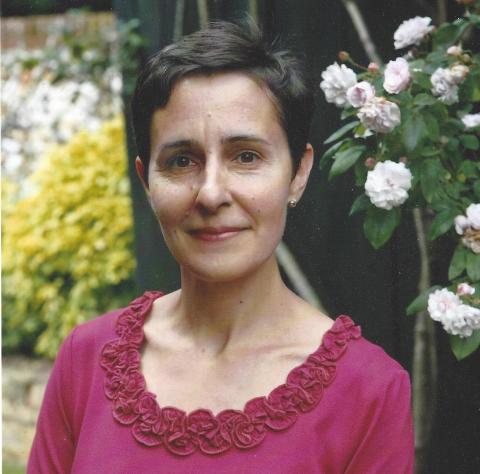
Fiona Rose has been lecturing about topics she feels passionately about since 2010 including William Morris and his circle, the Arts & Crafts Movement, Frida Kahlo and Frank Lloyd Wright. She has a BA in Social Psychology and aims to include the human story behind the artistic endeavours of her subjects. After an early career in public health Fiona founded and runs a home interiors business featuring the work of the great C19th designers such as Morris, Dearle, Voysey and Mackintosh. Fiona is a member of the Museum Collections committee for The William Morris Society and a former Trustee serving as Chair of their Communications and Business Development committees. She is also a regular contributor to the Society’s Magazine and a book reviewer for the Journal of William Morris Studies. Fiona is a House Guide and specialist lecturer for the David Parr House in Cambridge.
The David Parr House: a Decorative Artist's Palace of Art
Behind the front door of a modest terraced house in Cambridge lies an extraordinary Victorian hand painted interior. Working class decorative artist David Parr (1854-1927) spent many years decorating the finest churches and grandest homes in the country. In his precious spare time, he painted the walls of his own home with designs inspired by those he had worked on professionally, adapting them to create his own palace of art at 186 Gwydir Street.
June 4, 2026
Nirvana Romell
Holds MEd in History of Art and MA in English Language & Literature, with 23 years of lecturing experience on 3 continents. Since arrival in the UK in 2003, she has been working as a freelance lecturer, public programmes consultant and tour director. She has regularly presented art history courses and lectures, as well as trained staff and volunteers, at the Manchester Art Gallery, the Walker Gallery in Liverpool, University of Manchester and other art and learning institutions.
She also organizes and presents tours of permanent and temporary exhibitions across the UK and Europe, and study tours to the Balkans, Italy, France, Switzerland, Sweden and South Africa.
Mosaics in the Northern Adriatic: Power, Beauty and Education
Ravenna is well known for its mesmerising mosaics. However, the Northern Adriatic coast has two more World Heritage Sites, and many smaller places showcasing incredible mosaics. For centuries, Aquileia hid the largest early Christian mosaic in Europe, used to explain the basics of the new religion to neophytes. In Poreč mosaics, a Byzantine Madonna triumphantly sits on the throne above the altar – perhaps for the first times in the history of Christianity. These mosaics have great aesthetic beauty and story-telling powers. They also bear witness to the centuries of people and culture mixing, and power struggles in the first Christian millennium.
September 3, 2026
Dr Duncan Pring
Educated at Oxford (BA, MA) and London (MA, Ph.D) universities. PhD thesis on “The Preclassic Ceramics of Northern Belize”. Subsequent articles, mainly on Mayan ceramics. The Protoclassic in the Maya Lowlands published in 2000 by British Archaeological Reports. Recent publication on Early Maya Ceramics in "Pre-Mamom Pottery Variation and the Preclassic Origins of the Lowland Maya" ( Ed. Debra Walker University Press of Colorado 2023).
The Mayan Civilisation of Central America
The Maya lived in Central America between 1000 B.C. and 1528 at which time they were conquered by the Spaniards. The peak of their civilization was between 300 and 900 AD. During that time, they built enormous monuments, produced jade and ceramic items of great beauty and developed a calendar that was far more advanced than anything in Europe at the time. They had an advanced understanding of mathematics and astronomy and developed a hieroglyphic script which scholars are beginning to decipher, allowing us to understand their achievements much more fully.
October 1, 2026
Caroline Bendix
Caroline Bendix is a library conservator, accredited through the Institute of Conservation, who has worked on over 500 collections in the UK and abroad, including St Catherine’s Monastery, Sinai, advising on all aspects of books’ care in situ. She has written three of the British Library’s guides on preservation and in 2019 was awarded the Plowden Medal for her “outstanding work in developing in-situ library conservation”. Since 1992 she has been the National Trust’s Adviser on Libraries Conservation, the adviser and trainer for The Arts Society’s Heritage Volunteers projects and is on the Archbishop of Canterbury’s advisory panel for Lambeth Palace Library.
Why can't we read them? Conserving Books of The National Trust
The National Trust’s collection of some 450,000 books in 205 locations is cared for by property staff, volunteers and freelance conservators, working together to maintain the libraries in good working condition. Managing the environment, tracking down pests, creating conservation techniques that are discreet, and stabilising the collections for use are the main elements. Conservation evolves as the books’ use evolves, e.g. the catalogue is now available on-line and more researchers require access. The increased wish to use the books for visitor engagement projects provides further challenges.
November 5, 2026
Barry Venning
Barry Venning is an art historian whose interests and teaching range from the art of late medieval Europe to global contemporary art. He has published books, articles and exhibition catalogue essays on Turner, Constable and European landscape painting, but also has an ongoing research interest in postcolonial art and British visual satire. He works as a consultant and associate lecturer for the Open University. His media work includes two BBC TV documentaries, radio appearances for BBC local radio and abc Australia, and a DVD on Turner for the Tate.
Cartoons and Contraptions: The Wonderful World of W. Heath Robinson
For over a century, W. Heath Robinson, whom the novelist, Philip Pullman called ‘the immortal contraptioneer’, has been famous for drawing rickety, bizarrely complicated devices that carry out the simplest of tasks like potato peeling, wart removal or pancake making. He became so famous for them that in 1933, he was the obvious person to illustrate Norman Hunter’s Professor Branestawm books and, in 1943, Bletchley Park named one of their code-breaking machines after him. Much later still, some of the contraptions in Wallace and Gromit’s The Wrong Trousers are based on a scale model of a gadget filled house that he made for the Ideal Home Show in 1934.
December 3 2026
Monica Bohm-Duchen 
London-based freelance lecturer, writer and exhibition organiser. Has lectured for Tate, the National Gallery, the Royal Academy of Arts, the Open University, Sotheby's Institute of Art and the Courtauld Institute of Art. Associate Lecturer at Birkbeck College since 2005, and has led many tours. Publications include Understanding Modern Art (1991), Chagall (1998/2001), The Private Life of a Masterpiece (2001),The Art and Life of Josef Herman (2009) and Art and the Second World War (2013). She is the initiator and Creative Director of the nationwide Insiders/Outsiders arts festival (see https://insidersoutsidersfestival.org/), and contributing editor of the companion volume, Insiders/Outsiders: Refugees from Nazi Europe and their Contribution to British Visual Culture (2019).
Visions of the Orient - Japanese Art and the Western Artistic Imagination
For over two hundred years, until 1853, Japan had been almost entirely cut off from the western world. But almost immediately after trade routes re-opened, Japanese art and artifacts – as evidenced by countless portraits of beautiful women sporting kimonos and fans, with a backdrop of splendid porcelain vases - became all the rage in the West. But there was another, more profound and long-lasting, influence at work: namely that of the decorative, non-naturalistic woodcut prints by masters of the ukiyo-e (‘floating world’) school, which – combined with the influence of the new medium of photography – opened avant-garde artists’ eyes to entirely different ways of representing the world. The artists to be discussed in this lecture include household names like Claude Monet, Vincent van Gogh, Edgar Degas, Mary Cassatt and James McNeill Whistler, but also lesser-known figures such as Odilon Redon and James Tissot, as well as now barely-remembered artists such as Giuseppe de Nittis and John Frederick Lewis.
2027
February 4 - Matthew Sturgis - Aubrey Beardsley in Black and White
March 4 - Michael Howard - David Hockney: a certain generosity of spirit
April 1 - Sophie Matthews - Music in Art
May 6 - Hilary Guise - An Open Window to the Sea - Matisse on the Côte d'Azur
June 3 - Tim Kidd - The Guildhall Art Gallery - from Roman Amphitheatre to Civic Showpiece
September 2 - Lydia Goodson - Wrotham Pottery
October 7 - Denise Heywood - Legend and Lustre: Jim Thompson and Thai Silk (S)
November 4 - Toby Faber - The Imperial Easter Eggs of Carl Fabergé - Before the Revolution
December 2 - Andrew Spira - The Imperial Easter Eggs of Carl Fabergé - Before the Revolution
February 4, 2027
Matthew Sturgis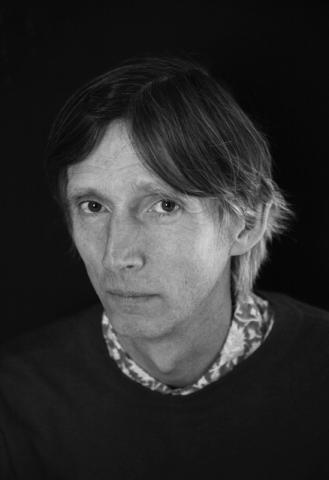
Matthew Sturgis is the author of acclaimed biographies of three of the great cultural figures of the late nineteenth century: Oscar Wilde, Walter Sickert and Aubrey Beardsley. (His biography of Oscar Wilde was shortlisted for the 2019 Wolfson History Prize.) He has also written a history of the English Decadence of the 1890s. A.N. Wilson - writing in the Times Literary Supplement - described him as ’the greatest chronicler of the 1890s we have ever had.’ His historical and cultural interests also led him to write a book - When In Rome - chronicling the history of how Rome has been visited, and the artworks tourists have admired there, over the millennia - from Classical and Medieval times, via the Renaissance and the Grand Tour, to our own era.
Aubrey Beardsley in Black and White
Aubrey Beardsley (1872-1898) was an artist who defined an age. His elegantly spare black-and-white pen drawings distilled the essence of the fin-de-siecle: decadent, erudite, unsettling, and marketable. Diagnosed with tuberculosis in childhood, he knew his life would be short, and he crammed much into his short career – illustrating Malory’s Mort Darthur and Oscar Wilde’s Salome, acting as art editor of both The Yellow Book and the Savoy, scandalizing the conventional and becoming a devout Roman Catholic. This talk charts his brief but brilliant life through his extraordinary art.
March 4, 2027
Michael Howard
Michael is a familiar face to The Arts Society. He is President of The Arts Society Bolton and a Fellow of the Royal Society of Arts. Although retired, he continues to teach at the Manchester School of Art. He has published widely on European art of the nineteenth and twentieth centuries, his books include: L. S. Lowry: A Visionary Artist; The Impressionists by Themselves; The Stations of the Cross / The Captive Figure and the award-winning dramatic interpretation and publication of material originally performed by the Zurich-based Dadaists of 1916. A New Order: An Evening at the Cabaret Voltaire. His book on Gauguin, was written in association with the Gauguin Museum, Tahiti, and his book on Monet for the Musée Marmottan, Paris. One of his most recent books concerns his wife’s life and work: The Human Touch: Ghislaine Howard (Ghislaine is also an accredited lecturer of The Arts Society).
Michael is a practising artist, and has exhibited at the Royal Academy, the New York Art Fair and elsewhere. He is represented in Manchester Art Gallery and in many private collections both here and abroad. He has appeared on television and radio many times and in 2004 he and Ghislaine worked on the film, Degas and the Dance which has awarded one of the prestigious Peabody awards.
David Hockney: a certain generosity of spirit
This lecture will celebrate the inspirational work of one of Britain’s best known artists whose work is instantly recognisable and speaks directly to us of the joys and challenges of being alive. We will share the journey of his life from Bradford to London; to New York and Los Angeles and back to Yorkshire and then his return to LA. His art is a sounding board of his vivid and colourful life and a reminder of the joys of looking, making . . . and living. Original works by Hockney and other relevant artists will be available for viewing at the lecture.
April 1, 2027
Sophie Matthews
Sophie is a musician well-known for her prowess on the English border bagpipes and has become one of the foremost players of the instrument in the UK. She also plays a variety of early woodwind instruments such as shawm, rauschpfeife, crumhorm and recorder. She’s also one of a handful of British players of the baroque musette, an 18th century French bagpipe similar to the Northumbrian smallpipes. When not touring with GreenMatthews, Sophie also makes instruments (she made her own baroque oboe) and works with respected luthier Tony Millyard on his flutes. Sophie is self-taught on all of her instruments.
So many of our historical references for musical instruments can be found in works of art. Not only can these windows into the past show us what the instruments looked like but also the social context in which they would have been played. Music and different instruments also play a strong role within symbolism in art. Sophie explores the instruments in selected works and then gives live demonstrations on replicas of the instruments depicted.
May 6, 2027
Hilary Guise
Lectures in the main museums in London for American universities, and has toured widely in the USA and lectured for the Smithsonian Institution. Has also worked for the Art Fund, taught courses for Cambridge University, has been a guest speaker on cruises. Trained as a painter at Central St Martin’s, she exhibits abroad, most recently in Berlin and France. Lives in London and in Provence.
An Open Window to the Sea - Matisse on the Côte d'Azur
Matisse moved from the Northern darkness of Picardy to the bright light of the Cote d’Azur on Dec 20th 1917. He was 48. The dazzle of light from the Baie des Anges slicing through half-closed shutters, the sea breeze blowing the voile curtains, released Matisse into a world of colour and sensuality. The Mediterranean floods in and pools in the velvet violin case as we are beguiled by rich fabrics and dozing odalisques and the scent of melons, pineapples and peaches. Leaving Paris and his Fauvre years behind him, Matisse found his spiritual home in the South, where he went on to give the world joy through colour through some of the darkest years of the 20th century.
June 3, 2027
Tim Kidd
Tim Kidd has been a London Blue Badge and City of London guide since 2008. He presents Adult Education courses on London for Surrey County Council and the London Borough of Kingston and is on the rotas of guides for Lincoln’s Inn, Middle Temple, Guildhall Art Gallery and Mansion House.
The Guildhall Art Gallery - from Roman Amphitheatre to Civic Showpiece
The City of London’s art gallery was in a parlous state after bombing in the Second World War and when the foundations for the new building were being excavated a major discovery was made – the remains of the Roman amphitheatre. Historians were certain the Romans had built one in London but no trace had been found until the 1980s. During his lecture, Tim Kidd will show pictures of the Amphitheatre as well as some of the City’s paintings on display in the gallery above, with a strong emphasis on Victorian painters, as well as one of the biggest framed paintings in Britain.
September 2, 2027
Lydia Goodson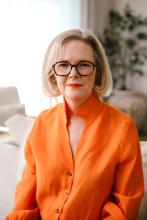
Dr Lydia Goodson is an art historian and lecturer specialising in the art and material culture of Renaissance Italy. After a career in television production and raising a family Lydia returned to academia and now holds a BA in Renaissance History, an MA in History of Art and was awarded her PhD in 2020 from the Warburg Institute of the University of London, for her thesis on painting and patronage in Renaissance Perugia. This return to study as a mature student has given Lydia a passion for the benefits of life-long learning and she hugely enjoys writing and delivering lectures for audiences of all ages. She is an art history tutor for CityLit and regularly speaks to other adult learning groups. Lydia’s research interests centre on painting production in Central Italy in the Renaissance. Lydia lives in Kent and the Umbrian region of Italy.
Wrotham pottery was made between 1612 and 1739 in a small area of Kent close to the village of Wrotham. This distinctive brown slipware, on which the names of the potters are frequently prominently displayed, has been popular with collectors since the end of the 19th century, and a large collection survives in the Fitzwilliam Museum in Cambridge. This talk explores what we know of the Wrotham potters themselves and looks at the many designs created in these local potteries before competition from large scale production in Staffordshire closed them forever.
October 7, 2027
Denise Heywood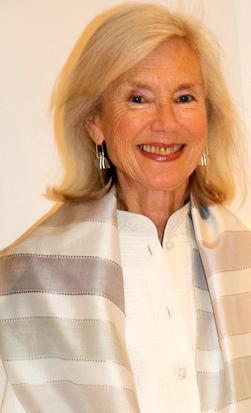
Author, lecturer, photographer and journalist. She worked in Cambodia in the 1990s and has been a scholar of Southeast Asian art ever since. Her books include one on the Buddhist temples of Laos, Ancient Luang Prabang and Laos, also in French, and Cambodian Dance Celebration of the Gods, with a foreword by the daughter of King Sihanouk. Lectures for the University of London School of Oriental and African Studies on their post-graduate Asian Art Course and has also lectured for V&A, Madingley Hall (University of Cambridge), British Museum, Royal Society for Asian Affairs, Asia House, National Trust, Royal Geographical Society and lectured worldwide for universities, museums, colleges, art institutions, literary societies and travel organisations. She writes for art, literary and travel publications and has appeared on television and radio. She has led cultural tours to Southeast Asia and France for the Royal Academy, the Art Fund, Asia House and many more and lectures on cruise ships.
Legend and Lustre: Jim Thompson and Thai Silk (S)
Jim Thompson arrived in Bangkok as a US army officer in 1945, fell in love with it and stayed. Captivated by the beauty of Thai silk, an ancient craft in decline, he resuscitated it and made it famous, creating costumes for films and embellishing his house, which today is a museum. An aesthete and art collector, he created an exquisite home from six handcarved teakwood houses brought from the countryside and filled it with Asian art. Here he became a legendary host. This lecture tells the story of his achievements, showing the intricate process of silk production and its illustrious heritage, including royal robes and temple murals. It touches on films featuring his silks, reveals his house and its art collection and reflects on a life that ended with his mysterious disappearance.
November 4, 2027
Toby Faber
Toby is an experienced lecturer and public speaker who has been accredited by The Arts Society since 2012. His career began with Natural Sciences at Cambridge and has been through investment banking, management consulting and five years as managing director of the publishing company founded by his grandfather, Faber and Faber, where he remains on the board. He is also non-executive Chairman of its sister company, Faber Music and a director of Liverpool University Press. Toby has written three narrative histories: Stradivarius – Five Violins, One Cello and a Genius; Faberge’s Eggs; and Faber & Faber – The Untold Story, as well as a novel, Close to the Edge. Of these, only the obvious one is published by the family firm.
The Imperial Easter Eggs of Carl Fabergé - Before the Revolution
Tells the story of the making of the Fabergé Imperial Easter Eggs: both the artistry and creativity that they embody, and how their designs link to the history of the last two Romanov Tsars.
December 2, 2027
Andrew Spira
Andrew Spira studied at the Courtauld Institute and Kings College, London.
For several years, he worked at the Temple Gallery, London (specialists in Byzantine, Russian and Greek icons) and as a curator at the Victoria and Albert Museum where he worked on the British Galleries and for the Silver, Metalwork and Jewellery Department.
Subsequently he was Programme Director at Christie’s Education for 14 years. Besides lecturing extensively on a wide range of subjects, he has taken numerous groups (including ADFAS and Arts Society groups) on cultural visits to Russia, Armenia, Georgia, Romania, Crete, Turkey, Tunisia and all over Europe.
His book The Avant-Garde Icon, on the relationship between Russian icons and Russian Avant-Garde art, was published in 2008. His two books on the relationship between art and personal identity, from the Middle Ages to the present day, were published in July 2020. A further book on the Russian artist Kasimir Malevich's pioneering painting 'Black Square', of 1915, was published in 2022.
Magnificent Furniture in the Baroque Age
Furniture came into its own in the seventeenth century when the tradition of cabinet-making got underway. New types of object reflect dramatically changing life-styles; the furnishing of private rooms, for instance, was unprecedented. And exotic materials, such as ebony and turtleshell, reflect Europeans ambitions with regard to the New World.
